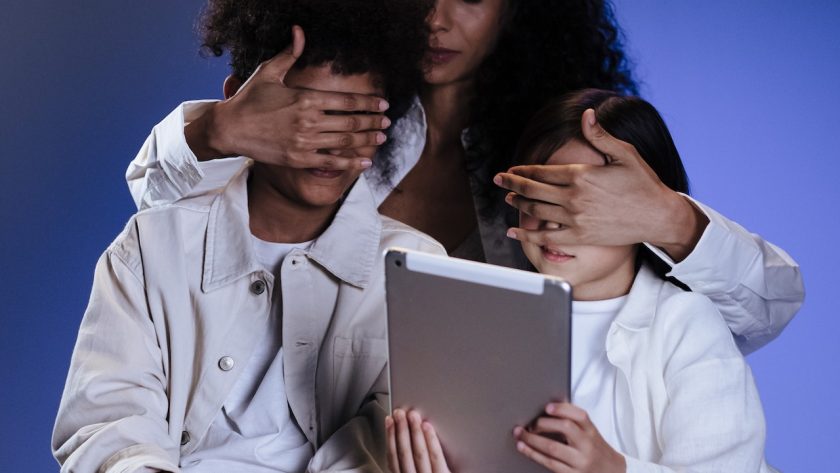The Importance of Finding a Healthy Balance
In today’s digital age, finding a healthy balance between screen time and other activities has become increasingly important. While screens can provide valuable educational resources and entertainment, excessive use can have negative effects on physical and mental well-being. It is crucial to prioritize finding a balance that promotes overall health and development.
One key aspect of finding a healthy balance is understanding the impact of screen time on education. While educational apps, websites, and programs can enhance learning experiences, too much reliance on screens may hinder social interaction skills or limit exposure to hands-on activities. By recognizing the potential drawbacks of excessive screen time, parents and educators can make informed decisions about incorporating technology into education while also encouraging alternative forms of learning.
Identifying educational screen time options is another essential step in achieving a healthy balance. With countless apps, games, videos, and online platforms available for educational purposes, it becomes vital to evaluate their quality before introducing them to children or students. Prioritizing interactive content that encourages critical thinking skills or fosters creativity helps ensure that screen time contributes positively to learning outcomes. Additionally, setting clear boundaries regarding duration and purpose when using screens for educational purposes further supports maintaining a healthy equilibrium between technology use and other activities.
Understanding the Impact of Screen Time on Education
The impact of screen time on education is a topic of increasing concern among parents, educators, and researchers. With the rise of technology in classrooms and the prevalence of screens in everyday life, understanding how excessive screen time can affect learning outcomes is crucial. One area where this impact is particularly evident is in attention span and focus.
Research has shown that excessive screen time can lead to shorter attention spans and decreased ability to concentrate. This can have significant implications for students’ ability to engage with educational material and retain information. The constant stimulation provided by screens can create a dependency on instant gratification, making it difficult for students to sustain their focus during traditional classroom activities or independent study.
Furthermore, excessive screen time has been linked to poor academic performance. Studies have found that students who spend more time using screens for entertainment purposes tend to have lower grades compared to those who use screens primarily for educational purposes or limit their overall screen time. This suggests that the content consumed on screens plays a critical role in determining its impact on education.
In light of these findings, it becomes essential for both parents and educators to find ways to strike a balance between educational screen time and other forms of learning experiences. By recognizing the potential negative effects of excessive screen usage on attention span and academic performance, steps can be taken towards creating an environment that promotes healthy engagement with technology while also fostering well-rounded learning opportunities beyond screens alone.
Identifying Educational Screen Time Options
There are numerous educational screen time options available to parents and educators today. These options range from interactive learning apps and websites to educational television shows and documentaries. When selecting these options, it is important to consider the age and interests of the child or student, as well as their individual learning style. For younger children, interactive apps that focus on early literacy skills or basic math concepts can be beneficial in promoting early learning.
For older students, online platforms that offer virtual classrooms or subject-specific tutorials can provide additional support for academic success. These platforms often allow students to engage with content at their own pace and offer opportunities for personalized instruction. Additionally, educational television shows and documentaries can serve as a valuable supplement to classroom instruction by providing visual examples and real-world applications of academic concepts.
In addition to considering the specific content offered by different educational screen time options, it is also important to evaluate the quality of these resources. Look for programs or apps that have been developed in collaboration with experts in education or have received positive reviews from teachers and parents. It may also be helpful to seek recommendations from other educators who have successfully integrated screen time into their teaching practices.
By identifying suitable educational screen time options, parents and educators can harness technology’s potential for enhancing learning experiences outside of traditional classroom settings.
Exploring the Benefits of Educational Screen Time
One of the key benefits of educational screen time is its ability to enhance learning experiences. With access to a wide range of educational content, students can explore various subjects and topics in a more interactive and engaging way. Whether it’s through educational apps, online tutorials, or virtual simulations, screens provide an opportunity for students to grasp complex concepts with visual aids and real-life examples.
Another advantage of educational screen time is its flexibility in catering to individual learning styles. Not all students learn best through traditional methods such as textbooks or lectures. Screens offer alternative ways for learners to absorb information, whether it’s through videos, interactive quizzes, or gamified lessons. This adaptability allows students to tailor their learning experience according to their preferences and needs.
Furthermore, educational screen time promotes self-paced learning. Unlike classroom settings where instruction may move at a predetermined pace, screens enable students to control the speed at which they consume information. They can pause or rewind videos as needed and spend extra time on challenging topics until they fully understand them. This autonomy fosters independent thinking skills and encourages active engagement in the learning process.
Overall, exploring the benefits of educational screen time reveals its potential in enhancing education by providing interactive content that caters to different learning styles while promoting self-paced learning opportunities for students. By leveraging technology effectively in education, educators can create dynamic and engaging environments that facilitate knowledge acquisition and retention among learners.
Recognizing the Role of Entertainment in Learning
Entertainment has always played a significant role in learning, especially for young children. Whether it’s through interactive games or engaging videos, entertainment can capture their attention and make the learning process more enjoyable. By incorporating elements of fun and excitement into educational activities, students are more likely to stay engaged and retain information.
One way entertainment contributes to learning is by fostering creativity and imagination. When children are immersed in entertaining activities, they have the opportunity to think outside the box and explore new ideas. For example, playing educational games that involve problem-solving or storytelling can help develop critical thinking skills while keeping them entertained.
Furthermore, entertainment can also enhance social interactions among students. Many educational platforms incorporate multiplayer features that allow children to collaborate with their peers or compete against each other in a friendly manner. This not only encourages teamwork but also helps build important social skills such as communication and cooperation.
Incorporating entertainment into education shouldn’t be seen as a distraction or hindrance; rather, it should be embraced as a valuable tool for enhancing the learning experience. By recognizing the role of entertainment in learning, educators can create an environment that fosters engagement, creativity, and collaboration among students. So let us embrace this approach wholeheartedly and harness its potential for nurturing well-rounded learners who thrive academically while enjoying every step of their educational journey.
Evaluating the Potential Risks of Excessive Screen Time
Excessive screen time can have detrimental effects on various aspects of a person’s life, particularly when it comes to physical and mental health. One potential risk is the sedentary nature of screen time, which often leads to a lack of physical activity. Spending prolonged periods sitting in front of screens can contribute to weight gain, obesity, and an increased risk of developing chronic conditions such as heart disease and diabetes. Additionally, excessive screen time may lead to poor posture and musculoskeletal problems due to prolonged periods spent in unnatural positions.
Another significant risk associated with excessive screen time is its impact on mental health. Studies have shown that spending too much time engaging with screens can increase feelings of loneliness, depression, anxiety, and stress. This could be attributed to factors such as reduced face-to-face social interactions or exposure to negative online content. Moreover, excessive screen use before bed has been linked to sleep disturbances and insomnia due to the blue light emitted by electronic devices disrupting natural sleep patterns.
Furthermore, excessive reliance on screens for entertainment or educational purposes may hinder cognitive development in children and adolescents. Excessive exposure to certain types of media content may lead to decreased attention span and difficulties focusing on tasks that require sustained concentration. It can also impede critical thinking skills as individuals become reliant on instant access information rather than engaging in problem-solving activities offline.
It is crucial for individuals across all age groups to be aware of these potential risks associated with excessive screen time. By understanding these dangers, individuals can take proactive steps towards managing their screen usage effectively while prioritizing their overall well-being and maintaining a healthy balance between technology use and other activities in their lives.
Strategies for Managing Screen Time Effectively
One effective strategy for managing screen time is setting clear boundaries and limits. Establishing specific rules around when and how screens can be used can help create structure and prevent excessive or unproductive screen time. For example, parents may choose to set a designated amount of time each day for educational screen activities, while also encouraging other types of learning and play.
Another important aspect of managing screen time effectively is monitoring content. Parents should take an active role in understanding what their children are watching or engaging with on screens. This includes regularly reviewing the apps, games, websites, and videos that are being accessed, as well as discussing any concerns or questions that arise from the content.
Additionally, it can be helpful to encourage alternative activities beyond screens. Providing a variety of options for entertainment and learning outside of digital devices helps promote a balanced approach to leisure time. This could include engaging in physical activities such as sports or outdoor play, reading books or participating in arts and crafts projects. By diversifying the range of activities available to children, they can develop different skills and interests while reducing reliance on screens.
By implementing these strategies for managing screen time effectively – setting boundaries and limits, monitoring content, and promoting alternative activities – parents can help ensure that their children have a healthy balance between technology use and other aspects of life. It is crucial to remember that moderation is key when it comes to screens; finding the right balance will ultimately support overall well-being and optimal educational development.
Creating a Schedule that Promotes Balance
Creating a schedule that promotes balance is essential for maintaining healthy screen time habits. One way to achieve this is by setting specific time limits for using screens each day. For example, parents can establish a rule that allows children to use screens for a certain amount of time after completing their homework or engaging in physical activities. This helps create structure and ensures that screen time does not overshadow other important aspects of life.
In addition to setting time limits, it is also important to incorporate breaks into the schedule. Taking regular breaks from screens can help prevent eye strain and promote overall well-being. Encouraging children to engage in activities such as reading, playing outside, or spending quality time with family and friends during these breaks can further enhance their learning experiences.
Furthermore, creating a schedule that promotes balance involves prioritizing non-screen activities as well. It is crucial to allocate dedicated time slots for other educational pursuits beyond screens, such as reading books or participating in hands-on projects. By doing so, children are exposed to different modes of learning and develop a more comprehensive understanding of various subjects.
By following these strategies and creating a schedule that balances screen time with other activities, individuals can enjoy the benefits of technology while still nurturing holistic development and overall well-being.
Engaging in Other Educational Activities Beyond Screens
Engaging in other educational activities beyond screens is crucial for a well-rounded approach to learning. While technology can provide valuable resources and tools, it’s important to remember that there are numerous ways to educate oneself that don’t involve staring at a screen. One such activity is reading books. Whether it’s fiction or non-fiction, books offer a wealth of knowledge and can ignite the imagination.
Another way to engage in educational activities beyond screens is through hands-on experimentation and exploration. This could include conducting science experiments, building models, or even participating in outdoor activities like gardening or hiking. These experiences not only enhance understanding but also foster critical thinking skills and creativity.
Additionally, engaging in artistic endeavors such as painting, drawing, or playing an instrument can be highly beneficial for cognitive development and self-expression. These activities allow individuals to tap into their creative side while also honing fine motor skills and cultivating patience.
By actively seeking out alternative educational activities beyond screens, individuals can broaden their horizons and develop a more holistic understanding of the world around them. It’s essential to strike a balance between screen time and these other enriching pursuits so as not to become overly reliant on technology alone for learning experiences.
Nurturing a Well-Rounded Approach to Learning
A well-rounded approach to learning goes beyond the confines of traditional classroom education. It involves exposing oneself to a variety of experiences and subjects, both inside and outside of school. By nurturing a well-rounded approach to learning, individuals can develop a broader perspective, enhance their critical thinking skills, and discover new passions.
One way to nurture a well-rounded approach is by encouraging students to explore different areas of interest. This can be done through extracurricular activities such as joining clubs or organizations that align with their hobbies or talents. By participating in diverse activities, students gain exposure to various disciplines and learn how different fields intersect.
Another aspect of nurturing a well-rounded approach is promoting curiosity and lifelong learning. Encouraging individuals to ask questions, seek answers independently, and engage in self-directed learning fosters intellectual growth beyond the boundaries of formal education. This could involve reading books on diverse topics or taking up new hobbies that challenge one’s existing knowledge base.
By fostering a love for learning across multiple domains – whether it be arts, sciences, humanities or sports – individuals are able to develop into more well-rounded individuals who are adaptable and open-minded. A holistic approach ensures that learners have access to varied opportunities for personal growth while also cultivating an appreciation for the interconnectedness between different subject areas.
Why is finding a healthy balance important in learning?
Finding a healthy balance is important in learning because it allows for a well-rounded approach that incorporates various activities and experiences, leading to a more comprehensive education.
How does screen time impact education?
Screen time can have both positive and negative impacts on education. It can provide access to educational resources and tools, but excessive screen time may hinder attention span and physical well-being.
What are some educational screen time options?
Educational screen time options include interactive learning apps, educational websites, online courses, virtual field trips, and educational television programs.
What are the benefits of educational screen time?
Educational screen time can enhance learning by providing engaging and interactive experiences, promoting critical thinking skills, and offering access to a wide range of educational content.
What role does entertainment play in learning?
Entertainment can play a crucial role in learning by making the educational experience enjoyable, increasing motivation and engagement, and facilitating the retention of information.
What are the potential risks of excessive screen time?
Excessive screen time can lead to decreased physical activity, difficulty concentrating, impaired social skills, disrupted sleep patterns, and potential exposure to inappropriate content.
What strategies can be used to manage screen time effectively?
Strategies for managing screen time effectively include setting limits, establishing technology-free zones or times, monitoring content, encouraging breaks, and promoting offline activities.
How can a schedule promote balance in learning?
Creating a schedule that allocates time for various activities such as screen time, physical exercise, reading, creative play, and social interactions can help promote a balanced approach to learning.
What other educational activities can be engaged in beyond screens?
Beyond screens, educational activities can include reading books, engaging in hands-on experiments or projects, participating in sports or outdoor activities, visiting museums or libraries, and engaging in artistic pursuits.
How can a well-rounded approach to learning be nurtured?
A well-rounded approach to learning can be nurtured by incorporating a variety of activities, embracing different learning styles, encouraging curiosity and exploration, and providing opportunities for both independent and collaborative learning.




